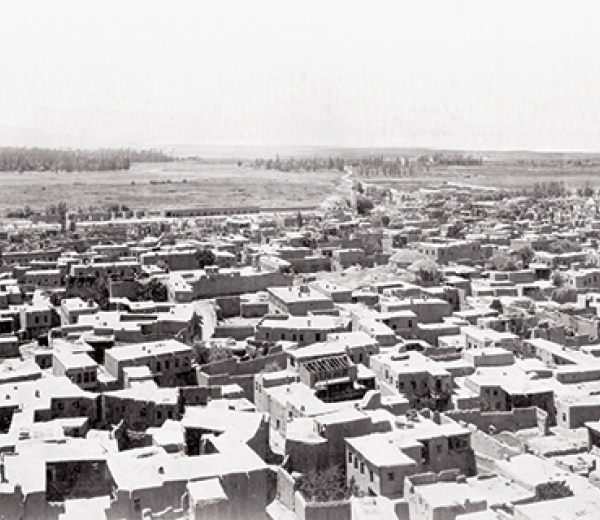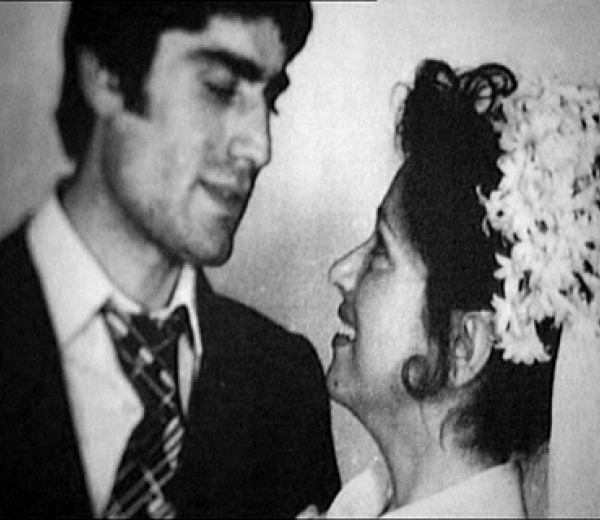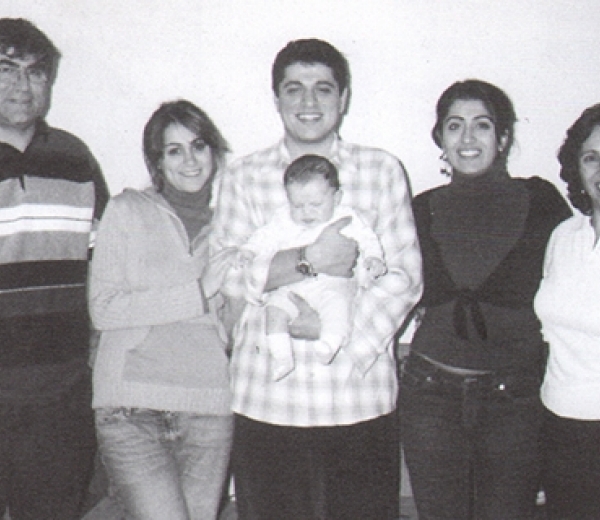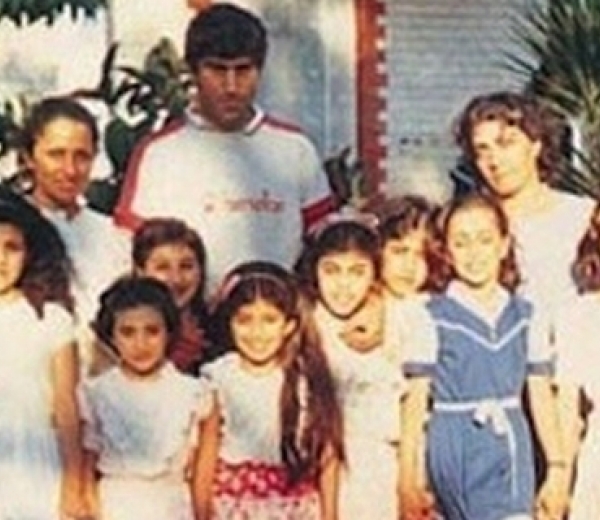Rakel Dink
Submitted by global publisher on Wed, 01/20/2016 - 12:56
English
Intro:
The life of Rakel Dink, widow of the late Turkish journalist and founder of the Agos newspaper Hrant Dink, has been continuously shaped by the past 100 years of Armenians’ history in the Ottoman Empire and present-day Turkey.
Weight:
-4 000
Story elements:
Title:
From a village with no chairs
Secondary Title:
to leading
Tertiary Title:
a foundation
Text:
The life of Rakel Dink, widow of the late Turkish journalist and founder of the Agos newspaper Hrant Dink, has been continuously shaped by the past 100 years of Armenians’ history in the Ottoman Empire and present-day Turkey.
Rakel Dink was born in 1959 in an Armenian family in Silopi (southeastern Turkey), close to the borders with Iraq and Syria. Her grandfather, Vartan, was a native of Van. Fleeing the Armenian Genocide, Vartan resettled his family on the slopes of Mt. Joudi in the Şirnak Province in southeastern Anatolia. To survive, the family was forced to hide in a mountain grotto. “They say such a cave didn’t exist, but that God opened it up for us. That’s the story. They lived there for a long time,” says Rakel, recounting a family legend passed down through generations.
Quote:
Until 2007, I was merely his beloved, the mother of his children, the woman of the house, just that. Much has changed for me. If only it hadn’t changed…
Image:

Text:
|
|
“In 1915, while in hiding, my grandmother’s sister had a child. She couldn’t stop the child from crying during that dangerous time. The mother-in-law took the child’s hand to stop the crying, so that the family wouldn’t be discovered, and…I can’t say the word. The child was lost,” Rakel remembers the horrific decisions the family was forced to make to survive.
Rakel’s father Siyament Yağbasan and mother Delal had six children. Their second, Rakel, was just eight years old when her mother passed away. Rakel’s father remarried and had seven more children. The family spoke only Kurdish and was mainly engaged in farming.
When Rakel was eight and a half years old, a group of clergy visited her village at the behest of Constantinople Patriarch Archbishop Shnork Kaloustian. At the time, Christian clergy from Istanbul traveled throughout Anatolia looking for Armenians and other Christians who survived the Genocide. Hrant Güzelyan and Orhan Younkesh, representatives of the Armenian Evangelical Church, took several groups of Armenian children back to Istanbul in order to give them an education. Rakel Dink and her two brothers were in the second group of kids. “We got to Bolis in order to learn Armenian, to read and write. There was no school near our village. No one knew how to read,” Rakel remembers. The new arrivals were housed at the Tuzla camp for Armenian children (Camp Armen), just outside Istanbul.
Image:

Text:
| Hrant and Rakel at Camp Armen |
“At the camp, they taught us a bit of the Armenian alphabet and a bit of Turkish. We hadn’t seen a chair back in the village. We just knew how to sow, reap and plough,” Rakel remembers. She later attended the Armenian Evangelical Church boarding school in Gedikpaşa, but still spent the summers at Camp Armen. She remembers moving from place to place during her school years as the Turkish government closed one shelter after another, arguing that the camps were illegal.
A fateful encounter took place a few days after Rakel moved to Istanbul. Hrant Dink also spent his summers at Camp Armen and attended classes at Gedikpaşa. “We had already fallen in love at the camp,” Rakel recalls.
Image:

Text:
| Rakel and Hrant on their wedding day |
Rakel and Hrant were married on April 23, 1977. Rakel was to become Hrant’s inseparable partner, advisor and colleague. Hrant continued his education at Istanbul University, where he studied zoology and philosophy. They had three children Baidzar (Delal), Ararat and Sera.
Image:

Text:
|
The Dink family, left to right: Hrant, Sera, Ararat (holding grandchild Nora), Delal and Rakel |
Many years later, Hrant wrote in the Agos newspaper: “ Naturally, April 23 is a special date for me. It’s also the wedding day of my dear wife and I. The night that connects April 23 to April 24 is the night we gave life to our first child. It was neither April 23 nor April 24. It was most probably April 23.5.”
When the founder of Camp Armen Hrant Güzelyan was arrested (the Turkish state charged him with training terrorists at the camp), Hrant and Rakel assumed responsibility for running the camp until 1983, when the government closed it down for good and stripped the Armenian community of its ownership rights. In 2015, the owner of the property decided to demolish the camp building, but due to the 175-day-long struggle waged by Armenian youth from Istanbul, the camp was returned to the community.
Image:

Text:
|
Hrant and Rakel Dink with children from Camp Armen |
Hrant became involved in writing, working for the Istanbul-based Armenian newspaper Marmara. In the 1980s, he was arrested for three times for his political views. In 1993 he founded the Aras Publishing House together with some friends. Three years later, realizing the importance of familiarizing Turkish society with Armenian issues, Hrant founded Agos (Furrow), the first Turkish-language Armenian weekly in Turkey.
“In Turkey, whenever there was a minor problem they would immediately blame ‘enemy Armenians.’ Labeling Armenians as the enemy, they would create their own politics. This became an important issue for Hrant: that we had to show ourselves, that they had to learn about our problems from us,” Rakel explains. The first edition of Agos was published during Easter of 1996. “The main headline read: ‘Behold, we have dug a furrow for you. Whoever has good seeds, let them come and sow them.’ Agos continues, but he…” Rakel laments.
Image:

Text:
| Hrant and Rakel Dink |
“We did everything together. When they picked ‘Agos’ for the name, I said it was a very nice name. There is the parable of Jesus, where the kind farmer is sowing seeds and digs a furrow. How wonderful to connect it in such a way!” Rakel exclaims.
Rakel experienced mixed feelings of pride and unease through the entire period of Hrant’s activities. “Sometimes the old women would say, ‘My boy, we are afraid for you. Don’t talk so boldly.’ But, on the other hand, they were proud and glad that someone was speaking up for them. I too was proud. I too liked that free speech of his. After the crime, I sometimes feel guilty that I never held him back. That I never said, ‘enough,’ ‘until when?’ If only I had said it more…” remembers Rakel.
Hrant Dink was assassinated outside of the newspaper’s office in Istanbul on January 19, 2007. It was a turning point Turkish history. Hundreds of thousands of Turkish citizens turned out for Hrant’s funeral. The slogan they chanted was: “We are all Armenian. We are all Hrant.”
“Two days before the funeral, they said: ‘Rakel you must speak.’ I said that I would. But what would I say? I prayed and said, ‘Dear God, I am your child. My husband and I loved each other very much. I must radiate that love. I said that I would try to explain the injustices in Turkey’,” Rakel remembers. “I wrote that letter, the letter to my loved one. And that day, after that speech, my life also changed.”
In that letter, Rakel Dink wrote:
“My dear, who can forget your writings and sayings? What darkness can force us to forget? Can fear? Persecution? The pleasures of the material world? Perhaps death? No, my dear, nothing can force us to forget.”
Text:
Ever since that day Rakel Dink has dedicated her life to preserving and furthering Hrant’s legacy and to addressing human rights issues in Turkey. The Hrant Dink Foundation was created in 2007 with these objectives in mind and Rakel now serves as president of the foundation’s board of directors. The foundation carries out various programs dedicated to protecting human rights in Turkey, to preserving the culture of minorities in the country, to researching hate speech and to normalizing Armenian-Turkish relations.
Having lived a difficult life albeit surrounded by love and kindness, Rakel Dink remains an optimist. She believes the future will be bright for her main sources of joy: her grandchildren Nora, Nareh, Saren and Hrant Dink Jr.
Quote:
“If only Turkey was governed so humanely, if human rights were so respected, so that we wouldn’t need such a foundation,” Rakel says.
Text:
The story is verified by the 100 LIVES Research Team.
Subtitle:
Board director of the Hrant Dink Foundation: “Nothing can force us to forget”
Story number:
211
Author:
Sargis Khandanyan
Header image:

